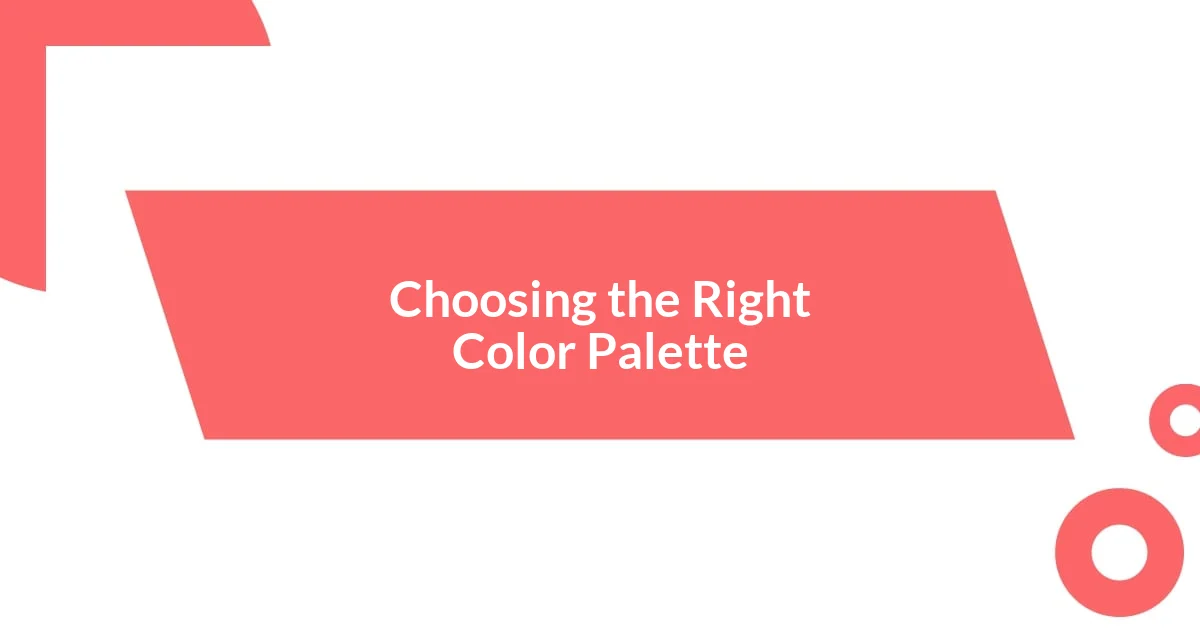Key takeaways:
- Mid-century style emphasizes simplicity, functionality, and the use of natural materials to create inviting spaces.
- Key design elements include clean lines, organic shapes, bold colors, and functional pieces that work harmoniously together.
- Regular updates and seasonal decor changes can refresh a space, allowing for personal expression and maintaining the aesthetic over time.

Understanding Mid-Century Style
Mid-century style is all about celebrating simplicity and functionality while retaining a touch of elegance. I remember the first time I walked into a space filled with these clean lines and organic forms—it felt like I was stepping back into an era of innovation and design that truly prioritizes living. Have you ever felt a connection to a particular style that just resonates with your own vision of comfort and aesthetic?
One of the hallmarks of mid-century design is its use of natural materials, such as wood, leather, and metal, which create an inviting and warm atmosphere. As I incorporated walnut furniture pieces into my own home, I noticed how they added not only beauty but also depth to the environment, evoking a sense of nostalgia. It’s fascinating how specific materials can transform the mood of a room, isn’t it?
Color plays a significant role in mid-century interiors, with bold and vibrant hues often paired with earthy tones. I vividly recall choosing a mustard yellow accent chair; it became a conversation starter and a pop of cheerfulness against a backdrop of neutral walls. This intentional use of color can awaken the spirit of a space, making it feel alive, and isn’t that what we all desire in our own homes?

Identifying Key Design Elements
To truly embrace mid-century design, I believe it’s essential to identify some key elements that define this remarkable style. The overall aesthetic is built around clean lines, organic forms, and an emphasis on functionality. When I shifted my focus to these design aspects, I found that even the smallest details, like the shape of a lamp or the angle of a chair leg, contributed significantly to the cohesive mid-century vibe I was aiming for.
Here are some of the defining characteristics I’ve come to appreciate:
- Clean Lines: Furniture and décor typically showcase sleek, straight edges without excessive ornamentation.
- Organic Shapes: Curvy forms and tapered legs create a sense of flow and movement in spaces.
- Natural Materials: Wood, leather, and metals evoke warmth and provide a tactile experience.
- Bold Colors: Deep blues, mustard yellows, and rich greens often appear alongside earthy tones like browns and greys.
- Functional Pieces: Each item serves a purpose while also contributing to the visual harmony of the space.
As I dove deeper into these elements, I found that incorporating authentic mid-century furniture not only enhanced my home but also stirred emotions connected to a simpler time. One particular moment stands out: as I unveiled a vintage Eames lounge chair, it became more than just a piece of furniture; it transformed into my new favorite reading nook, where I could unwind with a good book and a cup of coffee. That chair, with its perfect blend of comfort and style, made me appreciate how a single piece can elevate the entire experience of a room, don’t you think?

Choosing the Right Color Palette
When selecting a color palette for mid-century spaces, I find it helpful to strike a balance between bold and subdued hues. While vibrant oranges and greens can invigorate a room, pairing them with neutral tones prevents overwhelming the senses. I remember standing in front of paint samples in disbelief—how can such a small swatch hold the power to transform an entire room? It’s truly a thrilling experience!
Discovering the right color combinations often reveals little gems of creativity. For instance, I experimented with a serene backdrop of soft beige walls, which allowed a striking teal sofa to take center stage. This decision not only made the sofa pop but also created a calm and inviting atmosphere. Have you ever paired unexpected colors and felt the joy of witnessing how they danced together? It’s delightful!
Ultimately, I believe that choosing colors is about personal expression and creating a space that feels uniquely yours. I often recommend starting with one or two favorite pieces, whether it’s a beloved artwork or a special piece of furniture, and building the palette around that. For me, a vibrant rug became the foundation for experimenting with colors throughout my room. I encourage you to explore your favorite shades, as they can lead you to unexpected yet satisfying color combinations!
| Color Combos | Emotional Impact |
|---|---|
| Mustard Yellow + Grey | Warmth and Sophistication |
| Teal + Beige | Calm and Inviting |
| Coral + Olive Green | Joyfulness and Balance |

Selecting Essential Furniture Pieces
Choosing the right furniture pieces is crucial in creating a mid-century aesthetic. When I started selecting essential items, I focused on signature pieces like a low-profile sofa and a minimalist coffee table that epitomized that clean-lined look. I remember the thrill of finding a vintage credenza with gorgeous wood grain—every drawer had a story, and it felt like a connection to a bygone era.
As I explored various shops and online marketplaces, I realized that I needed pieces that not only looked beautiful but also didn’t compromise on functionality. For instance, I found an accent chair with tapered legs and an inviting silhouette; it became my go-to spot for afternoon relaxation. Have you ever discovered furniture that seems to invite you in? That’s exactly how this chair felt, and it made a significant difference in my space.
Moreover, I recommend considering the flow of your room when you’re picking furniture. I often rearranged my seating arrangements, looking for that perfect balance where conversation felt effortless. One time, after shifting my sofa slightly, I suddenly had a panoramic view of my living area—it was like unlocking a hidden dimension in my home! Trust me, when you play around with arrangements, you might just discover a setup that feels perfectly in tune with your lifestyle.

Incorporating Decor and Accessories
Incorporating decor and accessories is where the magic of mid-century style truly shines. When I began adding finishing touches, I was surprised by how small details could dramatically enhance the overall aesthetic. A single sleek lamp with a bold, tapered shade transformed a dull corner into a statement area, making it feel inviting and alive. Have you ever noticed how a single piece can change the energy of a room?
I found that vintage accessories, like a ceramic vase or a funky wall clock, can also serve as conversation starters. I have a striking orange vase that sparks joy every time I glance at it. Its vibrant color and unique shape add a playful element, reminding me of the creative spirit of that era. It’s interesting to think how our accessories hold not just style, but also personal memories and stories behind them.
Layering textures is another enjoyable aspect of decor. I remember adding a soft wool throw to my mid-century chair, creating a cozy atmosphere that beckoned me to take a seat and relax with a book. This combination of warmth and style reminded me that decor isn’t just about visual appeal; it’s about curating a space that resonates with who I am and how I want to feel. Have you explored how textures can elevate your space too?

Arranging Your Space Effectively
When it comes to arranging your space effectively, I’ve learned that a little planning goes a long way. I love to start by sketching out a simple floor plan; it’s like a treasure map for my design journey. I practice the “pencil test”—walking around with a pencil in hand, where I visualize where each piece can go, helping me avoid any awkward spaces that eat up valuable real estate.
One surprisingly impactful choice I made was to create zones within my living space. For example, I separated the reading nook from the conversation area using a strategically placed side table. This simple act carved out distinct atmospheres, making my home feel more dynamic. Have you ever felt that a little structure can open up new possibilities in your space? It’s incredible how design decisions can invite you to experience different parts of your home in unique ways.
In my experience, the balance between form and function is key. I once had a stylish but impractical coffee table that became more of a hindrance than a help. After replacing it with a multipurpose piece that offers storage and surface area, my space felt more cohesive and inviting. Do you think about how your furniture works for you? Trust me, function should never take a back seat to aesthetics because a well-arranged space embodies both beauty and practicality.

Maintaining and Refreshing Your Look
Maintaining the mid-century aesthetic in my space requires a bit of routine upkeep, but it’s truly rewarding. I designated one day a month to refresh my decor, which often involves swapping out smaller accessories. Recently, I replaced a few pillows on my sofa; the new geometric patterns instantly gave the room a fresh vibe. It’s fascinating how these little updates can renew my experience of the area. Have you thought about when was the last time you refreshed your space?
Beyond regular updates, I also like to examine how my color palette feels over time. I remember when a particularly vibrant teal seemed to define my living room; it was cheerful and inviting. However, after a season, I realized it was overwhelming. Opting for a more muted tone brought balance and serenity back into my home. This transformation taught me the importance of tuning into the emotions our spaces evoke. What colors resonate with you now, and are they still serving your space well?
Lastly, seasonal decor changes add an exciting layer to maintaining my mid-century style. When autumn approaches, I introduce earthy tones with decorative elements like small pumpkins on the coffee table. These elements not only keep my space feeling alive and relevant but also tie me to the changing world outside. Honestly, this practice has made me more attuned to the rhythms of nature. How do you incorporate the seasons into your decor to reflect your personal style?















